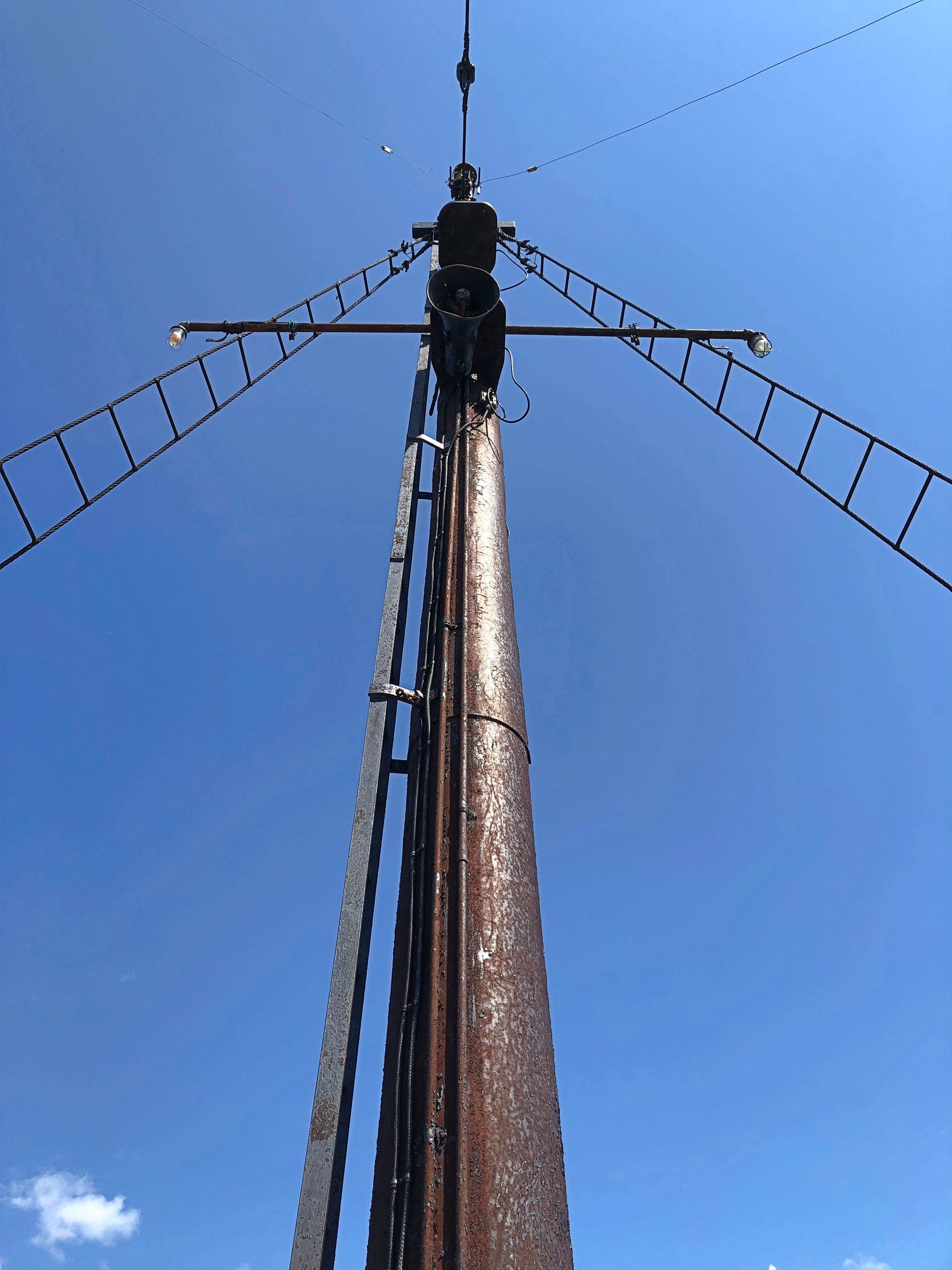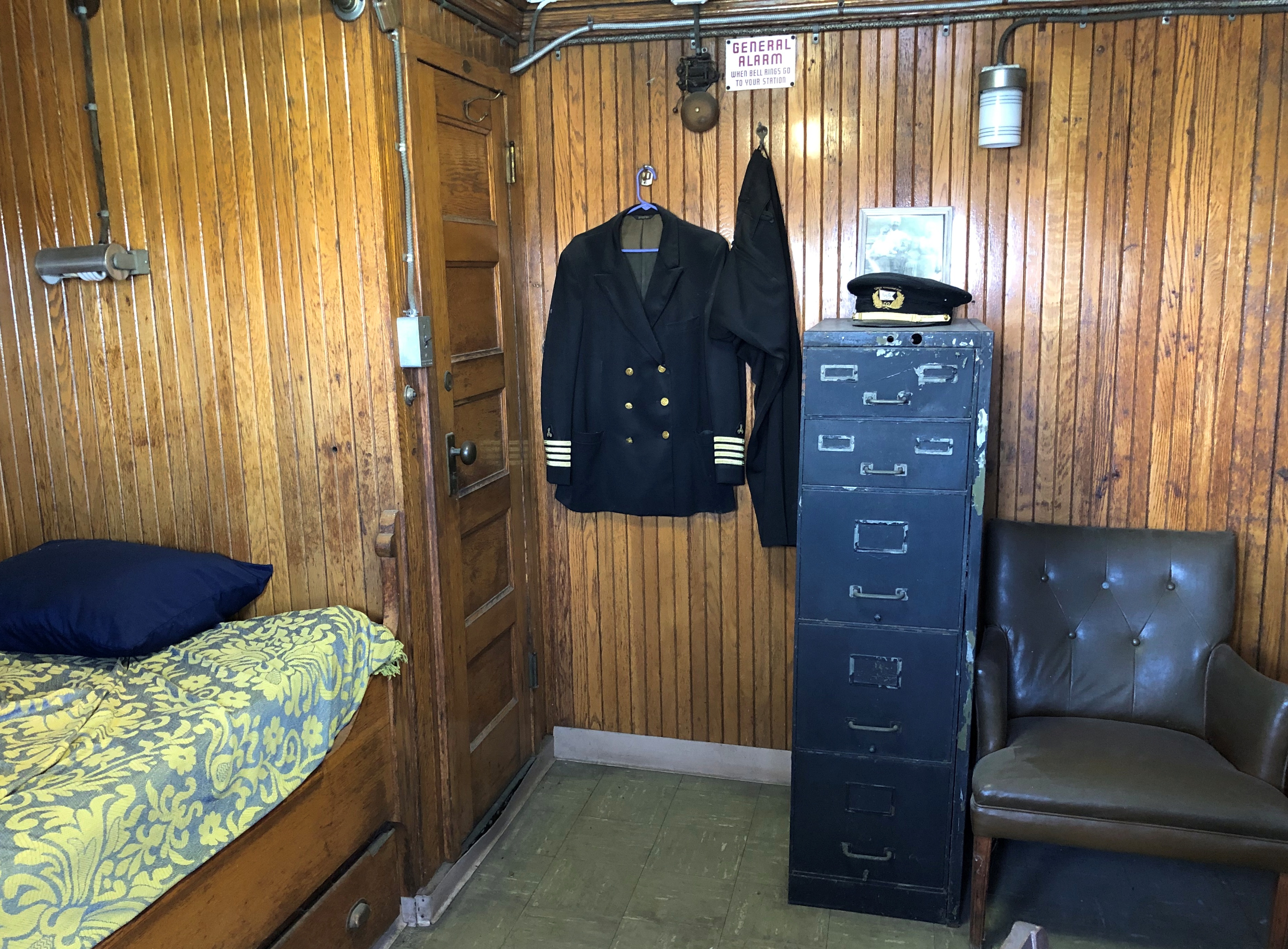Temps hit 100 degrees F. today at O’Hare, reportedly for the first time in more than 12 years. I’d have thought it would have been more recently than that, but no. Still, such heat is transient here in the North: Tomorrow’s forecast calls for only 83 for a high, and Saturday a mere 74.
While atop the 21-story Tower of History, whose only purpose is provide a way to gaze at the scenery below, I spied an ore carrier on the Michigan Sault Ste. Marie riverfront. One of the signs on the tower’s observation deck told me it was SS Valley Camp – a museum ship. The kind of information that raises my eyebrows to an “Oh, really?” posture.
So I paid a visit late on the morning of August 5. Glad I did.
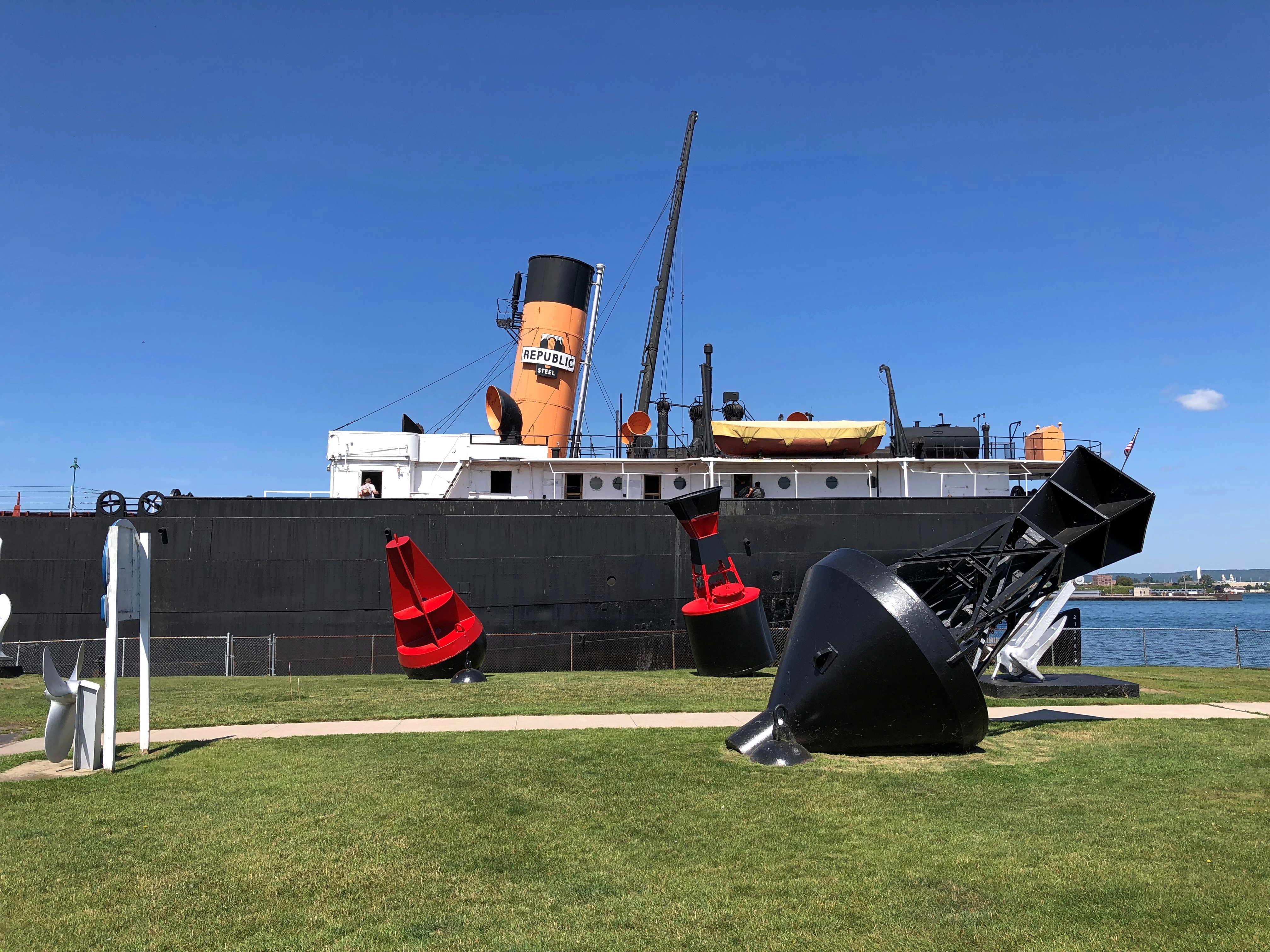
The best views of the ship aren’t from the outside, but on top.
The view from near the bridge, looking back toward the stern, which permanently points toward the St. Mary’s River and Canadian Sault Ste. Marie.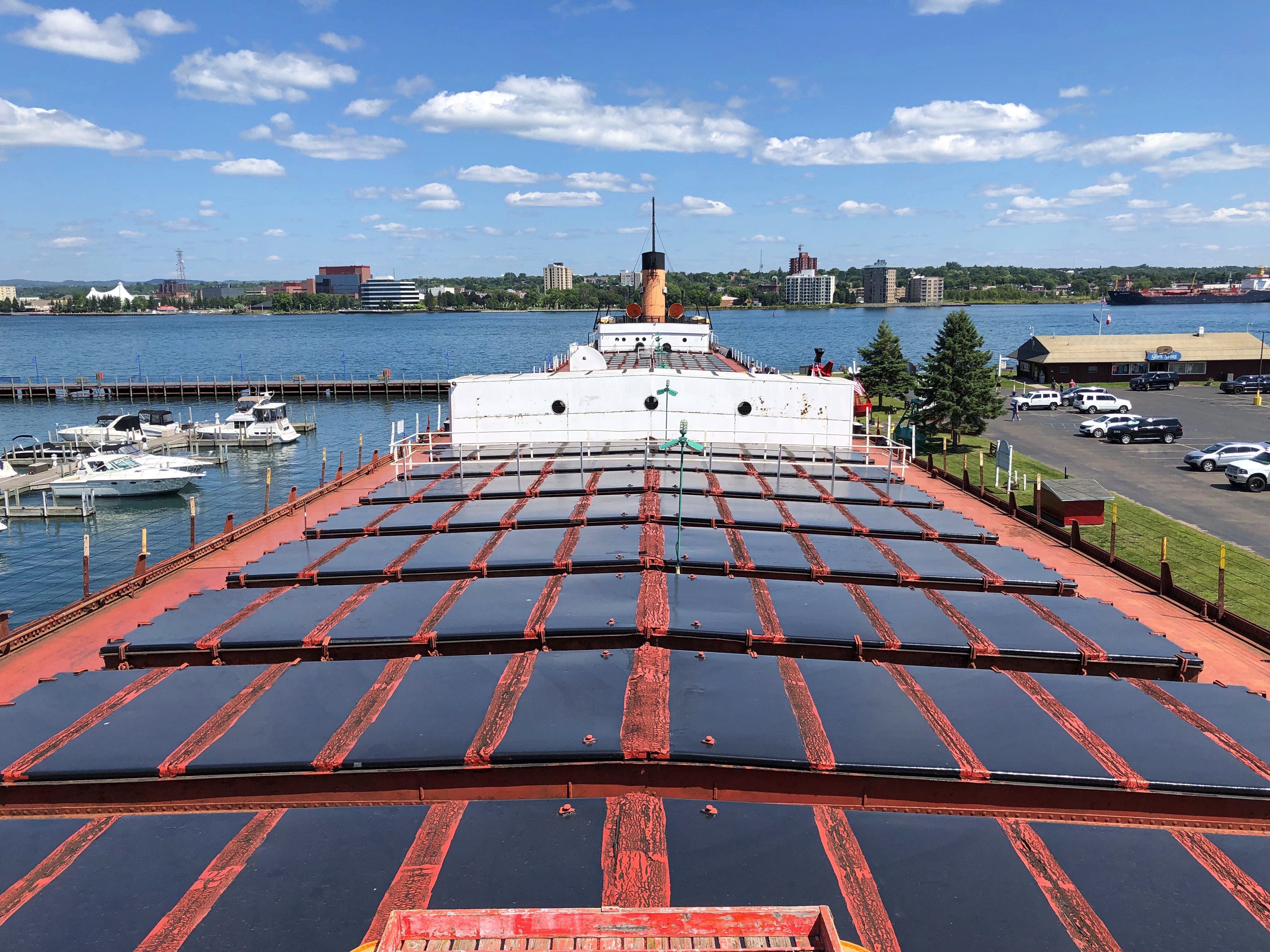
The view toward the bow, pointing toward the Michigan Sault Ste. Marie.
The metal plates – which look like solar panels under the bright sun – are in fact cargo hatches, for the Valley Camp in its nearly 50 years as a working ship carried ore and coal and other bulk goods. Visitors are advised not to go roaming around on the hatches, and I could see why, as they would be first-rate trip ‘n’ fall hazards that would land you on some hard, irregular surfaces.
These days the ship is owned by Sault Historic Sites, the same nonprofit that owns the Tower of History. The ship dates from 1917, built for the Producers Steamship Co. as the Louis W. Hill by the American Ship Building Co. in Lorain, Ohio, on Lake Erie. (And I have to say, in those days, company names were nothing if not descriptive.)
State-of-the-art for 1917, at least according to Lorain newspapermen: “As modern as the genius of man can make her,” the Lorain Times-Herald said at the time. A later owner renamed the ship Valley Camp, in honor of the Valley Camp Coal Co. of West Virginia.
“From 1917 until it’s last voyage in 1966, the 11,500-ton ship logged some 3 million miles and carried in excess of 16 million tons of cargo,” says the museum’s web site. “A length of 550 feet, beam of 58 feet, and depth of 31 feet, the Valley Camp [had] a crew of 32 men. Purchased by Le Sault de Sainte Marie Historical Sites Inc. [now Sault Historic Sites], the ship arrived at Sault Ste. Marie on July 6, 1968, during [the city’s] tri-centennial celebration.”
Topside is pretty cool, but the real museum action is below decks. Much of the interior is given over the displays about the history of the ship, other Great Lakes ships, and the industries they served and continue to serve: photos, models, artifacts and more.


Including a fourth-order, working Fresnel lens.
It wouldn’t be a Great Lakes nautical museum worth its salt — its freshwater — without something from the SS Edmund Fitzgerald. In this case, one of the doomed ship’s battered lifeboats.

You can wander around and see much of the original metal and glass guts of the Valley Camp, too.

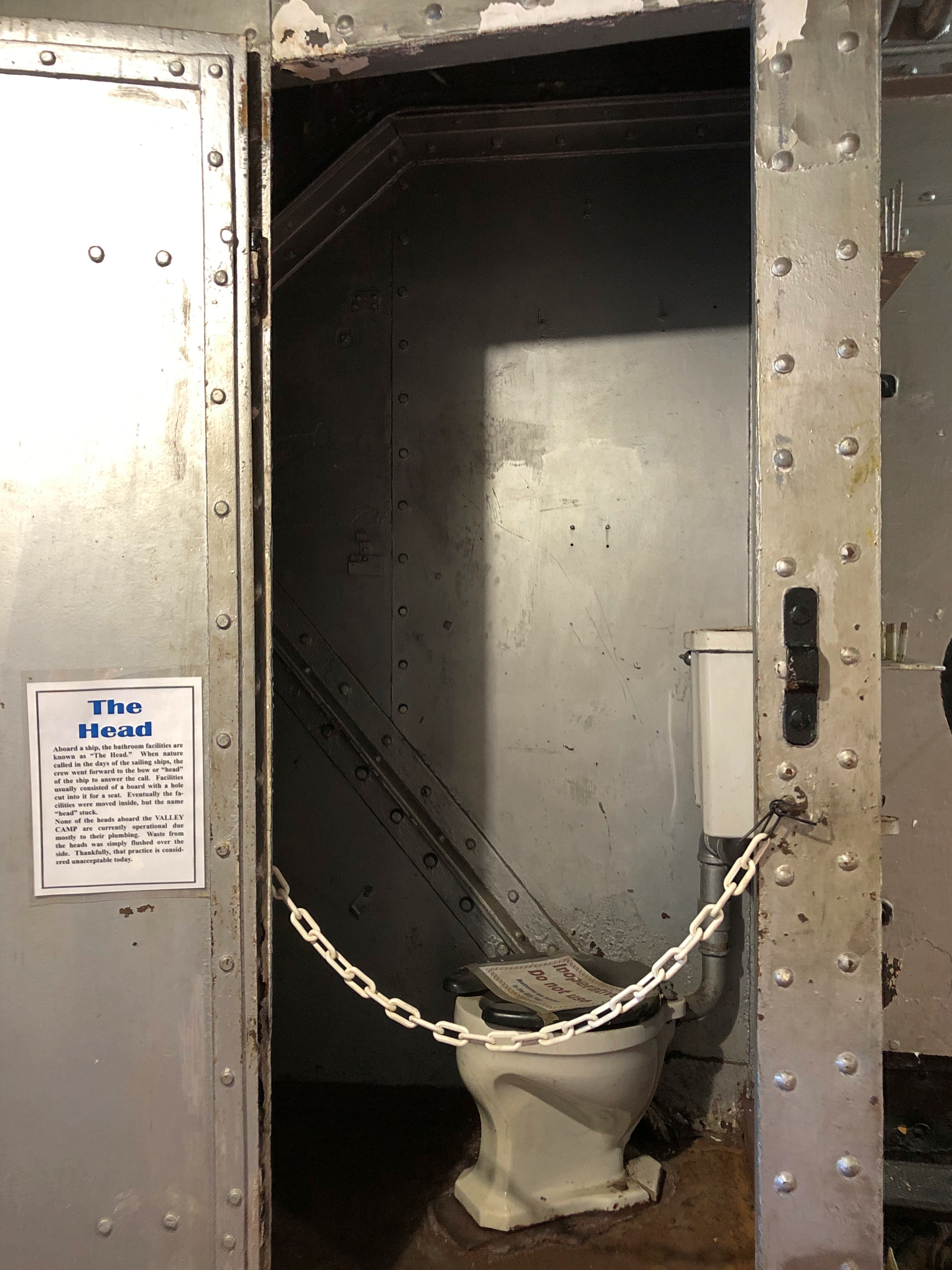

Cargo Hold #1, a sign told me, hasn’t been converted into museum space. I didn’t need to be told. The yawning space shows just how large the ship is.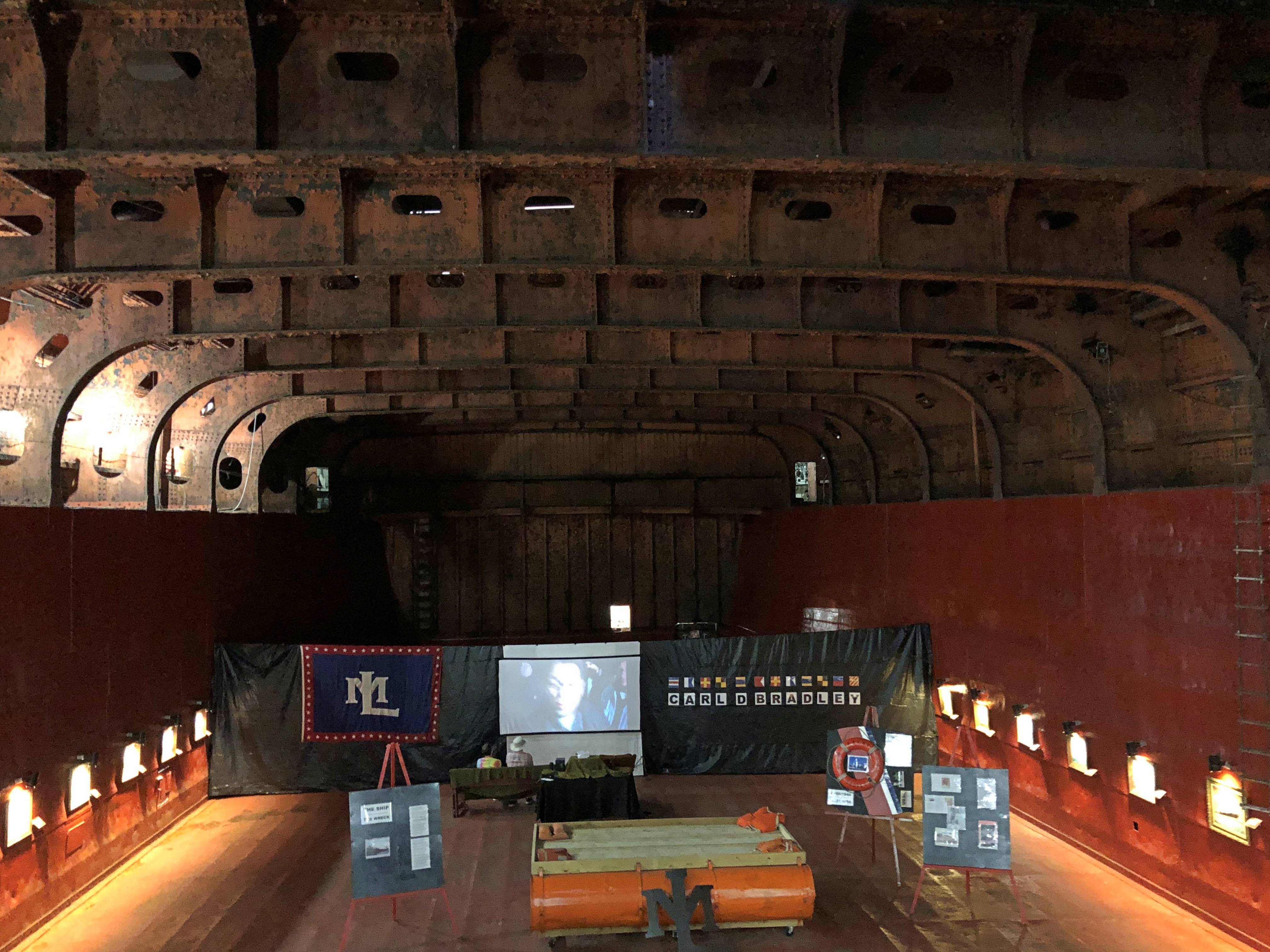
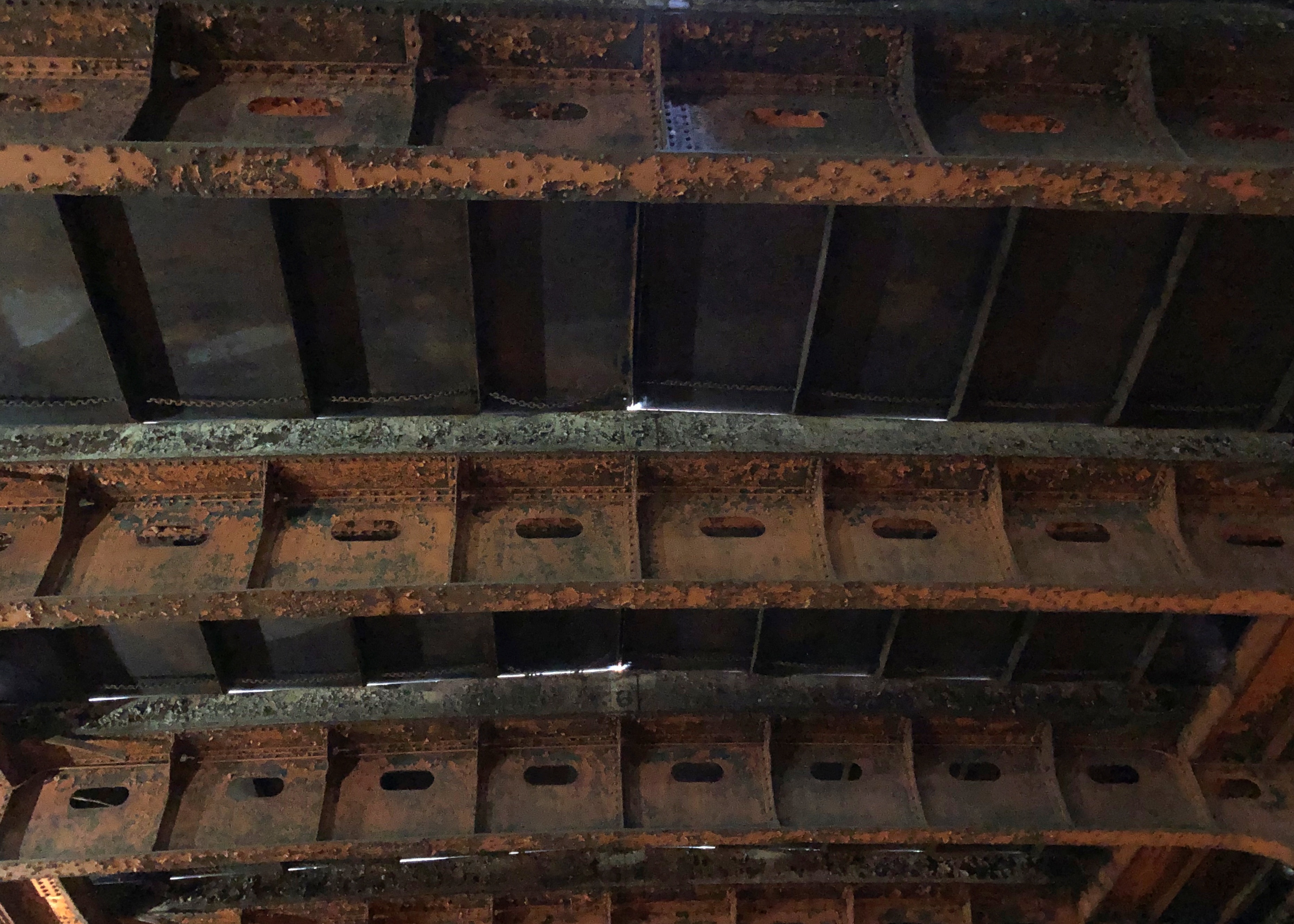
The hold did have an exhibit, which looked temporary, about the sad fate of the SS Carl D. Bradley, which went down in a Lake Michigan storm in 1958, taking 33 of its 35 crewmen with it.
A load of grain or coal typically filled that space on the Valley Camp; denser iron ore or taconite filled it only about a third of the way to the top, the sign said. Impressive.

